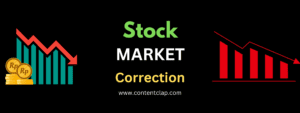The Greater Fool Theory refers to the assumption that the price of a stock can be pushed higher because there will always be a “greater fool” to buy it at a higher price.
This theory is often at play in late-day trades, where traders may make risky buys in the hopes of selling to other traders at a higher price before the market closes.
What is Greater Fool Theory?
The Greater Fool Theory is a financial concept that describes the idea that one can make money by purchasing overvalued assets and later selling them at an even higher price to someone else, known as the “greater fool.”
The theory suggests that there will always be someone (the greater fool) willing to buy an overvalued asset in the hopes of selling it to another buyer at an even higher price.
This cycle continues until there are no more buyers left, causing the market to collapse and the asset’s price to plummet.
Importance of Understanding Greater Fool Theory
Recognizing the role of the Greater Fool Theory in late-day trades is important for traders to understand the risks involved in this type of trading.
Being aware of the theory can help traders make more informed decisions about their buying and selling activities and avoid getting caught up in the hype.
Mechanics of Greater Fool Theory in Late-Day Trades
In late-day trades, the Greater Fool Theory often plays out as follows:
A trader buys a stock at a high price, reasoning that they will be able to sell it to another trader at an even higher price before the market closes
This creates a “greater fool” for the initial trader, as someone else is willing to buy the stock at a higher price
The cycle continues, with more and more traders buying the stock in the hopes of selling it at a profit.
Eventually, the market closes and there is no one left to buy the stock at a higher price, leading to a potential crash in price.
Key points of the Greater Fool Theory
Speculative Behavior: Investors buy assets not because they believe in the intrinsic value, but because they expect to sell them at a higher price.
Market Bubbles: The theory often explains the formation of market bubbles where asset prices inflate rapidly beyond their fundamental values due to speculative trading.
Risk of Collapse: The theory warns of the high risk involved as the last buyers, or the “greatest fools,” are left holding the devalued assets when the bubble bursts.
Psychological Aspect: It highlights the role of psychology in financial markets, where investor sentiment and behavior can drive prices away from fundamental values.
The Role of Supply and Demand
The mechanics of the Greater Foul Theory in late-day trades are closely linked to the concepts of supply and demand.
In a market with high demand and low supply (i.e., a low float stock), the price of the stock is more likely to be inflated as traders bid against each other to buy the limited number of shares.
This creates a prime environment for the Greater Fool Theory to take hold, as traders may be more likely to buy the stock at a higher price in the hopes of selling it to other traders.
How to avoid being a greater fool?
- Don’t blindly follow the head.
- Do thorough research.
- Resist the temptation to earn money quickly.
- Opt for a long-term strategy.
- Avoid buying stocks only because their price is increasing.
Remember
Overall, understanding the mechanics and importance of the Greater Fool Theory in late-day trades is crucial for traders to make informed decisions about their buying and selling activities.
By recognizing the risks and implications of this theory, traders can avoid getting caught up in the hype and potentially make more profitable trades.
Disclaimer: The information for this written post has been taken from various sources on the internet. While we strive to provide accurate and reliable information, but cannot guarantee the accuracy or completeness of the information. Please use your discretion before making decisions or taking action based on that information. Therefore, any reliance you place on such information is strictly at your own risk.









